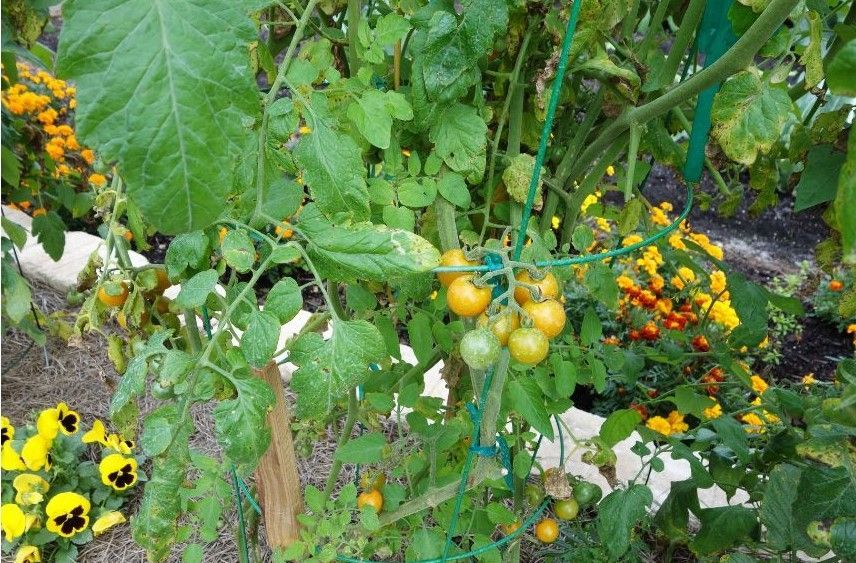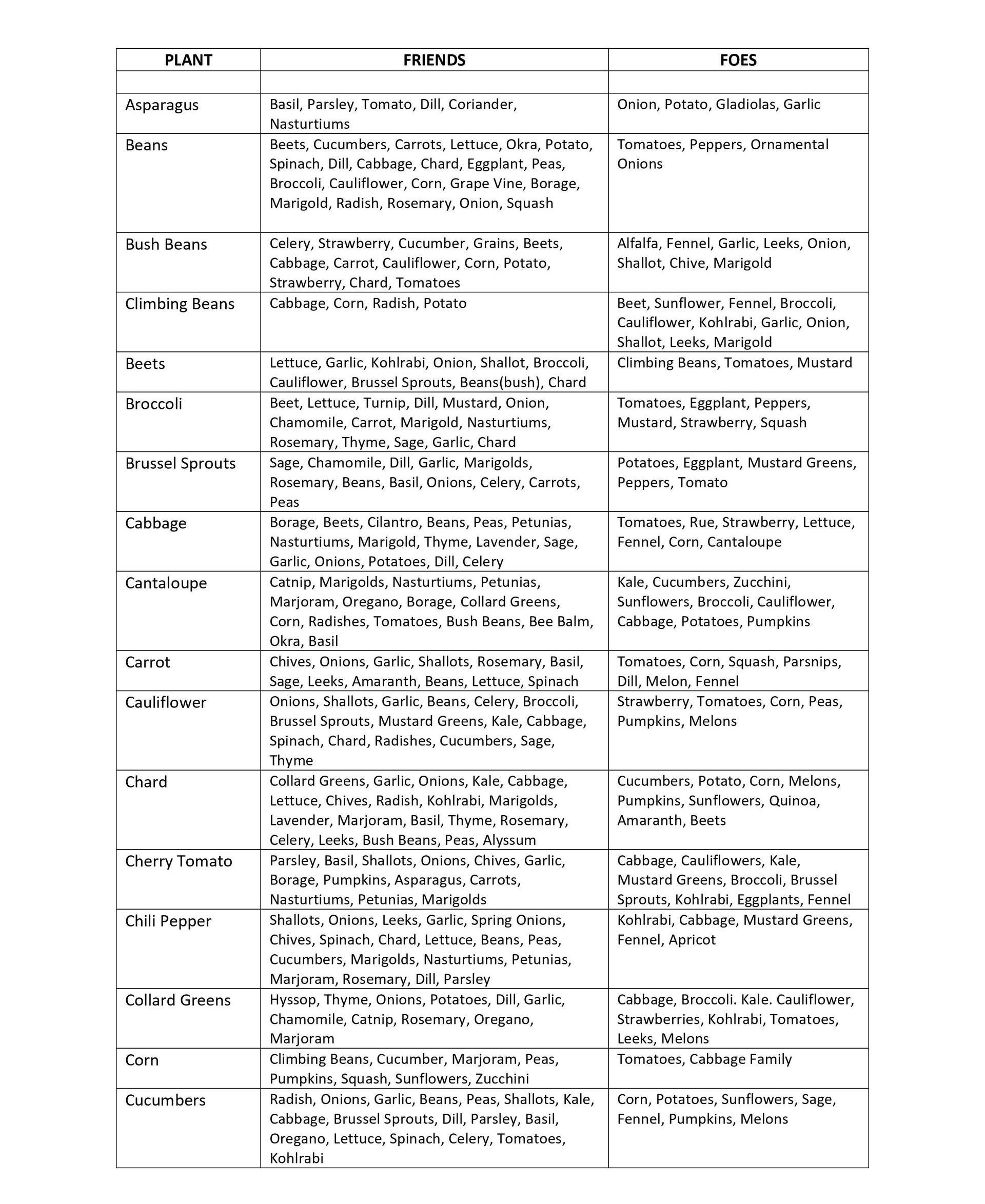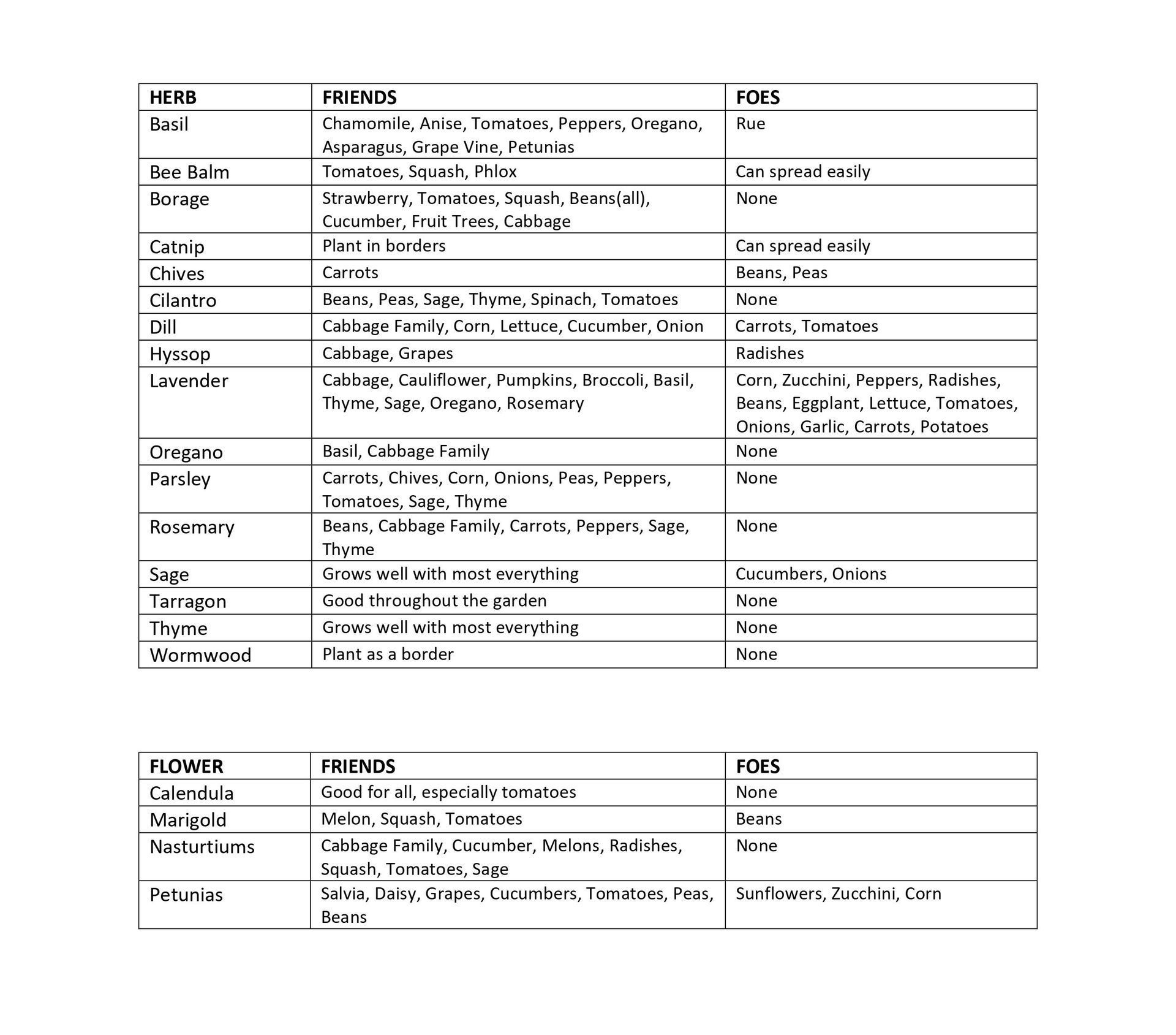Companion Planting in the Garden
Spring is almost here! Seed catalogs are already arriving in the mail, and it’s time to start planning the layout of your garden. As you plan, consider a technique called companion planting. Companion planting is the close positioning of different species of plants to enhance each other’s growth or protect each other from pests and can help improve your garden’s health and bounty, while maximizing the space you have.
The University of Massachusetts Center for Agriculture explains: “Companion planting is growing two (or more) crops near each other with the theory that they help each other in nutrient uptake, improved pest management and reduced pesticide use, enhanced pollination and higher vegetable yields.”
The benefits of companion planting
- Saves space – planting quick growing crops between rows of slower growing crops helps you maximize your space without missing a beat.
- Adds shade and shelter for other plants – planting tall, strong plants with climbers provides extra support within your garden, as well as eliminates weeds and provides shade.
- Can reduce the likelihood of contracting diseases – when you have many plants that are the same grouped together, disease can spread rapidly to the others before you have a chance to correct it. Companion planting separates your plants allowing you to isolate the infected, helping to limit the spread of disease to one area of your garden.
- Attracts beneficial insects and pollinators – marigolds and nasturtiums attract pollinators that help deter pests and make a great addition to your garden. Marigold roots contain a natural nematicide that kills root-knot nematodes. Root-knot nematodes are a microscopic and harmful nematode that feed on root systems, reducing plant health and yields. Nasturtiums are often used as decoy plants to lure pests away and they attract bees to help pollinate.
- Increases productivity – with added pest control, increased pollination, and maximum space efficiency, your harvest will be bountiful.
- Retains moisture levels and prevents erosion – The additional coverage maintains moisture levels below the surface of the soil, and the densely packed roots will aid in preventing erosion, common issues in gardens.

Popular pairings
- Corn, pole beans, and squash: known as the "three sisters," this combination was first developed by American Indian people centuries ago. Corn, with its sturdy stems, provides upright support for climbing beans, the pole beans fix nitrogen in the soil, and the large leaves of the squash shade the soil, retain moisture, and block out weeds.
- Cucumbers, sunflowers, and pole beans: the sunflower provides support for climbing pole beans, while cucumber vines shield the ground.
- Basil and tomatoes: basil repels thrips and disrupts the habits of the moths that cause tomato hornworms.
- Sage, with carrots or cabbage: sage is a proven repellant for carrot flies and cabbage moths.
- Parsley and tomatoes: parsley attracts beneficial insects that help keep control of damaging insects that prey on tomato plants.

Some plants offer benefits to almost any plant:
- Nasturtiums: lures hungry caterpillars away from cabbage, broccoli, and kale
- Mint: has an odor that strongly repels aphids, ants, and flea beetles.
- Garlic: has a strong scent that is repugnant to aphids, and all repels a variety of mites, moths, and beetles.
- Dill: known to attract ladybugs, which are voracious eaters of damaging aphids and spider mites.
Herbs that attract beneficial insects and repel pests:
- Basil
- Borage
- Chives
- Cilantro
- Lavender
- Mint
- Oregano
- Rosemary
- Sage
- Thyme
Flowers that attract beneficial insects and repel pests:
- Lavender
- Marigolds
- Nasturtiums
- Sunflowers
- Zinnias
Companion planting is not just the easiest way to deter pests and plant diseases organically, but also a way of using other plant’s relationships to your advantage. Doing the necessary research before you plant will help you decide what pairings will work best for you. This can help you achieve that bountiful and beautiful garden we all dream of.
Below is a companion planting chart that will help you plan your garden layout. Download the printable version here. Happy Gardening!



References:
Companion Plants - GP (growers-planet.com)
Companion Planting 101 (w/ Garden Companion Planting Chart) ~ Homestead and Chill
Companion Planting Chart - Guide of Compatible Vegetables | Gilmour
The 6 Major Benefits Of Companion Planting Explained | UnAssaggio
Companion Planting Guide for Vegetable Gardens (thespruce.com)
Check out the latest:









